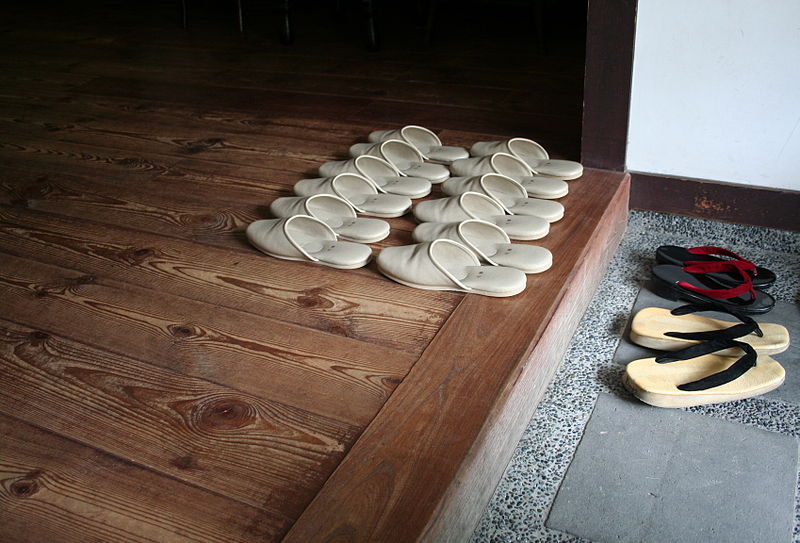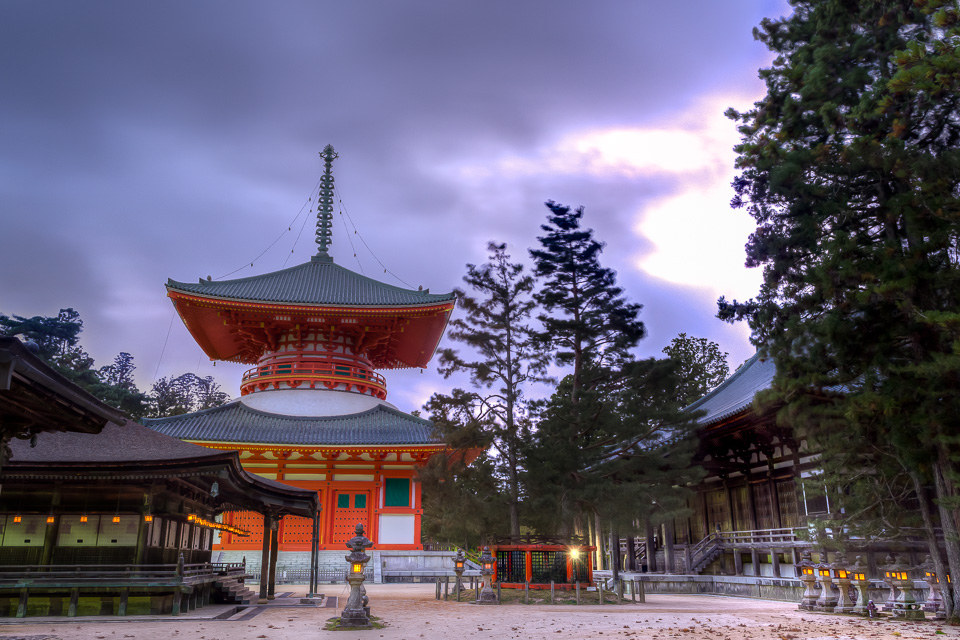Etiquette for First Time Travel Experiences in Japan
Share

When Japanese tourists visit other countries on tours, the tour companies often educate the groups about local manners and customs. Japanese tourists are quite adept at working hard to leave a good impression because they understand they are representatives of Japan. When thinking about travel manners, the Japanese are admirable examples of how conscientious travelers should act when in foreign lands. Their thoughtful behaviour and respectful attitudes are likely an extension of themselves and their collection of manners and customs in their own culture.
As a first time traveler to Japan it is a good idea to research and understand as much as possible about these customs because every effort that is made to align with them will greatly improve the opportunity to impress the locals. Not only will the locals be more accepting of foreigners who at least try to adhere to certain common customs, but putting forth the effort to explore and participate in the Japanese culture will enhance the entire experience. As a first time traveler to Japan there is plenty of adventure, cultural experiences, shopping, hobbies, nightlife, entertainment, enlightenment, and intellectual curiosity to go around. When participating and/or interacting with the Japanese people there are some general common customs to follow in all circumstances as well as other customs for more particular situations.
General Common Customs

Japanese house slippers
Two very common customs in Japan have to do with shoes and greetings. Upon entering a house or a Japanese inn (ryokan) it is customary to take off shoes in the entryway. Typically, slippers will be provided, but they also must be taken off when stepping on a tatami floor. Sometimes toilet slippers will also be provided in private homes or even in ryokan, which are only to be worn inside the toilet area. Many Japanese restaurants will also require guests to take of their shoes. Usually these establishments will offer a shoe locker in which to store the shoes.
The Japanese people often greet each other by bowing, not shaking hands. Though bowing is the most acceptable greeting, shaking hands is a quite acceptable business greeting. Furthermore, it is common to exchange business cards in formal business introductions. When doing so the card should be extended with both hands with the right side up toward the other person. The business card should also be received with both hands and genuinely looked at before putting away. The card should never be folded, never placed in pant pockets, and never sat on in front of the card giver.
There are different ways of bowing that reflect the social status of the person or people being bowed toward. Bowing can range from a slight nod to greet someone of a lower social standing or informal situation to that of a bow of up to 90° that will convey a very deferential attitude. However, the Japanese people are quite accommodating to foreigners and do not expect them to bow and will gladly greet them with a friendly handshake.
Etiquette for more specific experiences/activities
Photo credit: The Tokyo Times
First time travelers to Japan should take advantage of the opportunity to eat sushi because there is a big difference between western and Japanese sushi. High quality Japanese sushi is an experience that is highly recommended and there is no place better to get sushi than the world’s most celebrated sushi restaurant, Tokyo’s Sukiyabashi Jiro, headed by the master chef Jiro Ono. The world’s top sushi chef offers a twenty-course sushi meal that must be experienced. The cost may be about 30,000 Japanese yen and only lasts about fifteen to twenty minutes, but it is a sushi extravaganza like no other.
Sushi Etiquette
Upon arriving at any establishment for sushi it is polite to greet the host or hostess. They will likely greet guests with the traditional “irasshaimase” (“please come in”). Simply acknowledge their greeting and kindly answer their questions about your day or evening. If seated directly at the sushi bar only ask the itamae or sushi chef for sushi; drinks, soup, and other items not sushi related will be fulfilled by the wait staff. Never ask the itamae if the sushi is fresh; it is insulting. Instead, ask for the itamae’s recommendation. Understand the itamae is likely very busy, but it is acceptable to engage the itamae in conversation when he is able. Do not leave food on the plate after the meal; this is impolite, as is acting like something is not to your liking. When seated at the bar it is also polite to thank the itamae. Try a bit of Japanese by saying “domo arigato” or “gochisosama deshita”, which mean thank you and thank you for the meal respectively.
Entertainment
Photo credit: Photo by Michael Maggs, Wikimedia Commons
First time travelers seeking to experience a uniquely Japanese form of entertainment should set time aside to visit a local pachinko parlour. These are like Japanese arcades that often double as minor gaming spots with casino-like games that offer prizes. Pachinko is a game played on Japanese machines sometimes called pachinkos and are found in thousands of parlours in Japan. One of the largest parlours in Tokyo is Espace with three floors of pachinko situated right in the midst of the fashionable, busy neighbourhood of Shinjuku. Each year more than thirty million people in Japan play pachinko, which is only a slice of the total gaming industry in Japan that has become the number one national pastime.
The Japanese people are avid gamers, embracing not only their beloved pachinko, but also other casino and poker games online and in nearby Macau. The evidence that this type of gaming in Japan is expanding into popular culture can be seen in the example of Japanese model Yuiko Matsukawa. Matsukawa is a pop-culture celebrity who also has a love for poker and is using her celebrity to share the skill-based game with her fans in Japan.
Pachinko Etiquette
While pachinko parlours are somewhat similar to American casinos, there are some differences to note when experiencing a pachinko parlour. The first difference concerns player behaviour; the Japanese consider playing pachinko a solitary and personal endeavor. Though the parlours may be crowded most players do not want to be disturbed. Many players find the game to be an escape and like to tune out the rest of the world. If there is a need to use the restroom or leave the machine temporarily during play, simply leave a box of cigarettes or something similar in the tray; this will convey to others the machine is reserved. This is acceptable for up to around thirty minutes. Never touch the pachinko balls of another player; this is thought to be bad luck and can even be a personal insult to some players. If there is a loose ball on the floor, the expectation is to notify an attendant to have it removed. This is a practice that evolved from a superstitious belief that the loose ball(s) would infect a machine and bring back luck.
Shrines and Temples
Japan has about 95,000 shrines and 85,000 temples, many of which are wonders of architecture, nature, and culture. Visitors to these sites often find themselves in a strangely pleasant frame of mind. Every Japanese city has at least a few shrines and temples, but larger cities like Kyoto have thousands of them. Many Japanese people are religious followers and visit and profess their faith through various acts of worship at these sacred places.
However, visitors need to know there is a difference between Shrines and Temples.
Shrines in Japan are typically based upon the teachings of Shintoism, which is a set of Japanese spiritual beliefs. These shrines usually have designs and features such as tori archways at the top that are unique to Japan. Shrines can also be distinguished through their names; “jinga” will be a part of the full name (Akiba-jinga), translating literally to mean Shinto shrine. Temples, on the other hand, are based on the facets of Buddhism and can be distinguished in the name as well. The sound “ji” will be at the end of the name (Senso-ji, Kincho-ji, Todai-ji, Daigo-ji).
Shrine and Temple Etiquette
When visiting these sacred places there are differences in the practices being implemented. Both shrines and temples require respect of visitors as a primary requirement. The difference, however, concerns the particular practices upon entry to the sacred places. When visiting a shrine visitors will experience pouring fresh water, but visitors to a temple will find themselves lighting incense.
When traveling to Japan it is important to understand there are customs and proper manners that are a significant part of the Japanese culture. Many of them differ drastically from those in the western world so first time travelers should practice due diligence prior to arriving. Avoid the embarrassment and show the proper respect by studying Japanese etiquette resources to ensure the best and most fulfilling Japanese experience.


